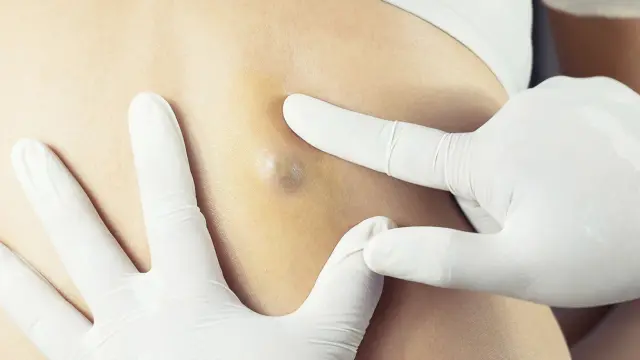Moles are common skin growths that can appear anywhere on the body. While most moles are harmless, it is essential to understand their types, evaluate their characteristics, and recognize the importance of regular check-ups for early detection of potential concerns. In this blog post, we will delve into the world of moles, exploring their types, factors to consider for evaluation, and the significance of professional dermatological assessments at California Dermatology Institute.
Types of Moles
1. Common Moles: These moles are typically small, round, and symmetrical with a uniform color. They often develop during childhood or adolescence and may change slightly in appearance over time.
2. Atypical Moles: Also known as dysplastic nevi, atypical moles are larger than common moles and exhibit irregular borders, uneven coloration, and an asymmetrical shape. They may resemble melanoma, a potentially dangerous form of skin cancer, and require close monitoring.
3. Congenital Moles: Congenital moles are present at birth and vary in size. They can range from small to large and have an increased risk of developing melanoma.
4. Acquired Moles: Acquired moles develop after birth and can appear at any age. These moles are typically benign, but changes in size, shape, or color may warrant further evaluation.
Evaluating Moles
While most moles are harmless, it is crucial to assess their characteristics and watch for any changes that could indicate a potential problem. The ABCDE rule is a helpful guideline for evaluating moles:
1. Asymmetry: Benign moles are usually symmetrical, meaning one half mirrors the other. Asymmetrical moles may indicate the need for further evaluation.
2. Border Irregularity: Regular moles typically have smooth and even borders. Moles with jagged or irregular borders should be examined by a dermatologist.
3. Color Variation: Benign moles are usually uniform in color, whereas moles with multiple shades of brown, black, blue, red, or white may require professional assessment.
4. Diameter: Most benign moles are smaller than 6 millimeters (about the size of a pencil eraser). Moles larger than this may warrant evaluation.
5. Evolution: Changes in the size, shape, color, or elevation of a mole may be a cause for concern and should be examined by a dermatologist.
Importance of Regular Check-Ups
Regular check-ups with a dermatologist at California Dermatology Institute play a vital role in the early detection and management of potentially problematic moles. Here’s why regular mole checks are crucial:
1. Early Detection of Skin Cancer: Melanoma, a deadly form of skin cancer, can arise from existing moles or develop as new moles. Regular monitoring and professional evaluation allow for early detection and prompt treatment, significantly improving outcomes.
2. Risk Assessment: A dermatologist can assess your overall risk for developing skin cancer based on factors such as family history, sun exposure, and the presence of atypical moles. Understanding your risk profile enables personalized preventive measures and monitoring.
3. Expert Evaluation: Dermatologists are trained to recognize changes in moles that may signify melanoma or other skin conditions. Through professional evaluation, they can provide accurate diagnoses and recommend appropriate treatment plans, if necessary.
4. Peace of Mind: Regular mole checks provide peace of mind and reduce anxiety about the potential risks associated with moles. Dermatologists can address any concerns, answer questions, and provide guidance on mole self-examinations between visits.
Moles are a common occurrence on the skin, and while most are harmless, it is essential to monitor them for any changes that could indicate a potential problem. Regular check-ups with a dermatologist at California Dermatology Institute are crucial for evaluating moles, identifying any abnormalities, and ensuring early detection and treatment of skin cancer or other skin conditions. By understanding the types of moles, following the ABCDE rule for evaluation, and recognizing the importance of professional assessments, you can take proactive steps to maintain healthy skin and peace of mind. Remember, your skin health matters, so schedule regular mole checks with a dermatologist to ensure the ongoing well-being of your skin.





